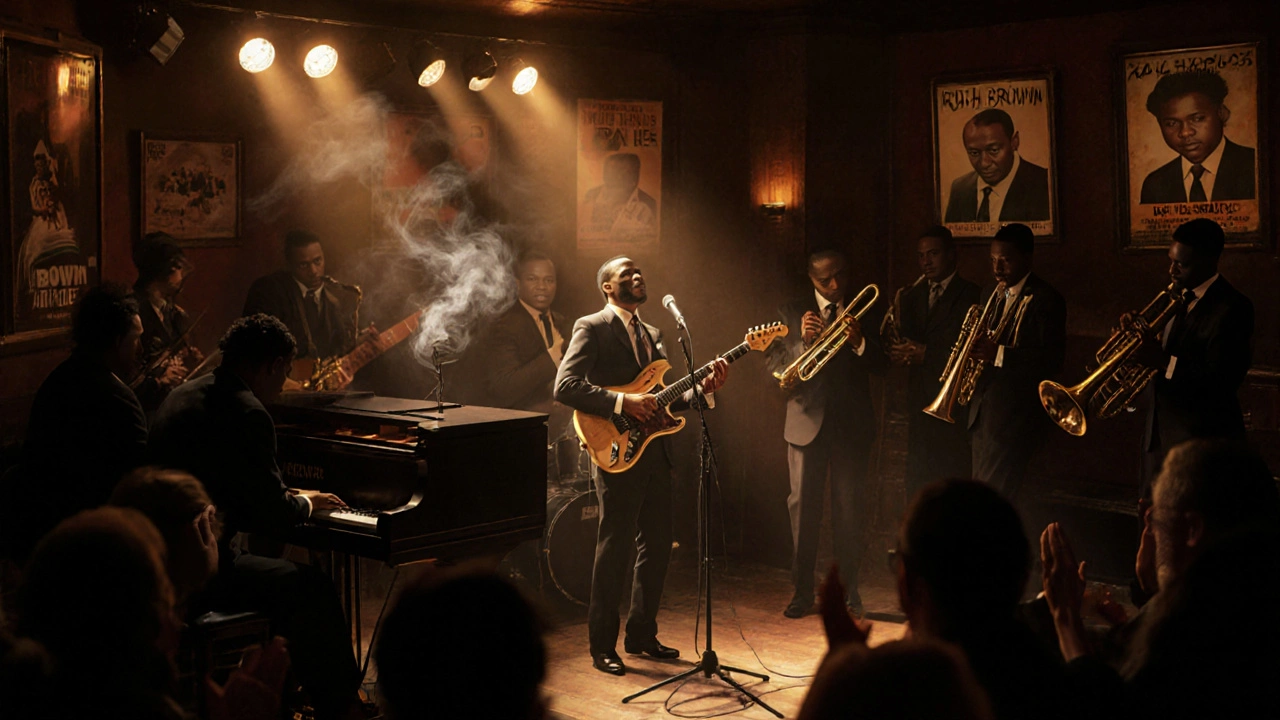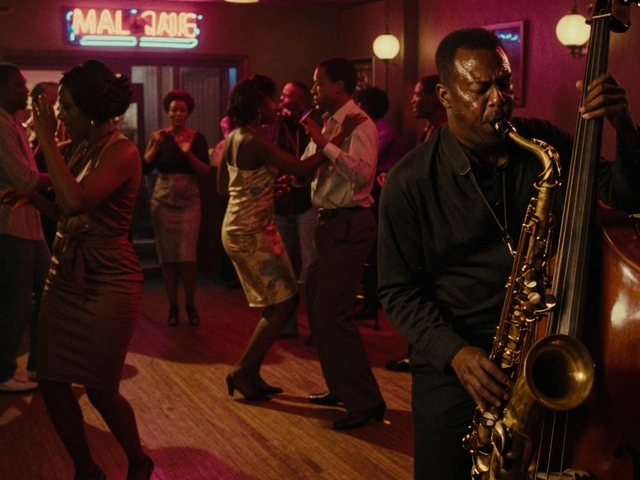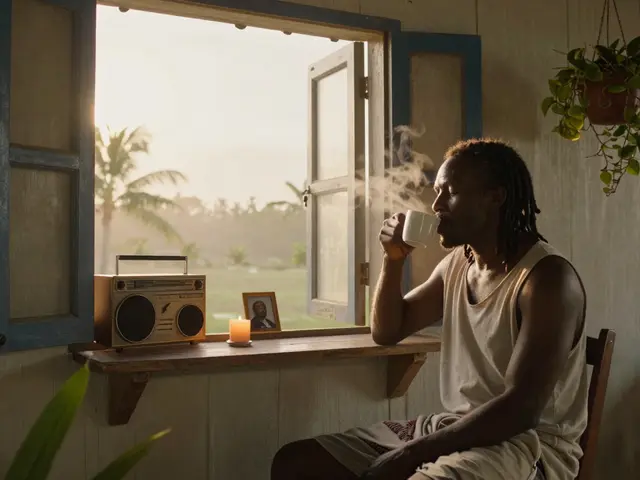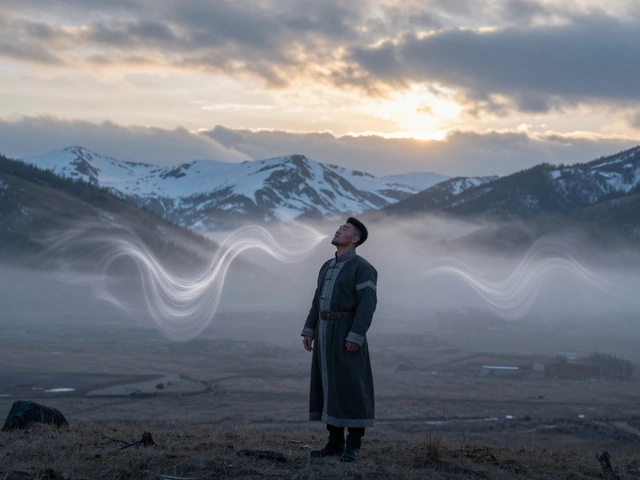R&B Legacy Calculator
Calculate how much modern music owes its rhythm and blues influence. Based on the article's analysis of R&B's DNA in contemporary music.
Rhythm and blues isn’t just a genre-it’s the heartbeat of modern music. You hear it in the groove of a hip-hop beat, the cry of a pop chorus, the slide of a guitar solo in rock. But where did it come from? And why does it still move people decades later?
Before there was rock and roll, before there was funk or neo-soul, there was rhythm and blues. It emerged in the 1940s from Black communities across the U.S., blending the raw emotion of the blues with the drive of jazz, gospel’s call-and-response, and the pulse of swing. It wasn’t called "R&B" at first. Record labels used terms like "race records" to market music made by and for Black audiences. When Jerry Wexler at Atlantic Records started using "rhythm and blues" in 1949, it wasn’t just a rename-it was a recognition. This music had power. It had rhythm. And it had soul.
What Makes R&B Different From the Blues?
People often mix up blues and rhythm and blues. They’re cousins, not twins. The blues is slower, heavier, built on 12-bar structures and lyrics about hardship, loss, and survival. Think B.B. King’s "The Thrill Is Gone"-a slow burn with aching bends on the guitar.
Rhythm and blues? It’s faster. It’s danceable. It keeps your foot tapping even when the lyrics are breaking your heart. Ray Charles’ "I Got a Woman" turned a gospel hymn into a swinging groove. Louis Jordan’s "Chickens Come Home to Roost" made you move before you even understood the words. R&B took the emotional weight of the blues and wrapped it in a beat you couldn’t ignore.
The instruments changed too. While blues leaned on acoustic guitar and harmonica, R&B brought in electric guitars, driving bass lines, piano riffs, and horns. Drummers stopped just keeping time-they started pushing the groove. That backbeat on two and four? That’s the signature of R&B. It’s the reason you can’t sit still when you hear Sam Cooke’s "A Change Is Gonna Come."
The Architects of R&B
Who built this sound? It wasn’t one person. It was a movement.
Ray Charles didn’t just sing-he fused gospel with blues and jazz to create what became soul music. His 1954 hit "I Got a Woman" is often called the first true R&B record. Little Richard brought wild energy, pounding piano, and screams that shattered radio norms. Fats Domino kept it smooth, with rolling piano and a voice that felt like a warm embrace.
Then there was Ruth Brown, known as the "Queen of R&B." She had 11 top 10 hits on the Billboard R&B chart in the 1950s. Her voice carried pain and pride in the same breath. And Donny Hathaway? He took R&B into the 1970s with layered harmonies and piano that felt like prayer.
These artists didn’t just make music. They made culture. They played in clubs that white audiences weren’t allowed to enter. They recorded on small labels that got ignored by mainstream radio. And still, their songs spread-through jukeboxes, radio signals that slipped across state lines, and word of mouth.

How R&B Gave Birth to Rock and Roll
Elvis Presley didn’t invent rock and roll. He popularized it. But the roots? Those were Black. Chuck Berry’s "Maybellene" was built on a boogie-woogie bass line straight out of R&B. Little Richard’s "Tutti Frutti" had the same energy as a James Brown groove. When white artists covered R&B songs and made them hits, they often erased the original artists from history.
That’s the ugly truth. But the music didn’t disappear. It evolved. R&B became the foundation. Without it, there’s no Beatles’ "Twist and Shout," no Motown’s "My Girl," no Prince’s "Kiss."
Even today, when you hear a modern pop song with a syncopated beat, a vocal run that climbs like a prayer, or a bassline that makes your chest vibrate-you’re hearing R&B. It’s in Beyoncé’s "Crazy in Love," in The Weeknd’s "Blinding Lights," in Bruno Mars’ "Just the Way You Are." The formula hasn’t changed: emotion + groove + voice.
The Role of the Voice in R&B
What sets R&B apart from other genres isn’t the instruments-it’s the voice. R&B singers don’t just sing notes. They bend them, break them, whisper them, scream them. They use melisma-stretching one syllable over multiple notes-not as a trick, but as a way to pour feeling into the sound.
Aretha Franklin didn’t sing "Respect." She demanded it. Every note was a fist raised. Whitney Houston didn’t just hit high notes in "I Will Always Love You." She made you feel every second of loss, every breath of hope. Even in quieter moments, like Marvin Gaye’s "What’s Going On," the voice carries the weight of a nation.
That’s the soul of R&B. It’s not about perfection. It’s about truth. A cracked note can mean more than a flawless one. A sigh between phrases? That’s the space where the listener breathes with the singer.
Why R&B Still Matters Today
Some say R&B died when hip-hop took over. Others say it merged into pop. But R&B didn’t vanish-it adapted. The 2000s gave us Usher, Alicia Keys, and Mary J. Blige. The 2010s brought Frank Ocean, SZA, and H.E.R. They didn’t just keep the genre alive-they expanded it.
Frank Ocean’s "Channel Orange" mixed R&B with poetry, jazz, and electronic textures. SZA’s "Ctrl" turned heartbreak into a sonic collage of vulnerability and strength. H.E.R. brought back the slow jam but made it feel new, with minimalist production and lyrics that cut deep.
And it’s not just in the charts. R&B is in the background of movies, commercials, and TikTok trends. Why? Because it speaks to feelings that other genres often avoid. Loneliness. Longing. Joy that’s hard-won. Love that’s messy. R&B doesn’t sugarcoat. It holds space for all of it.
The Legacy You Can’t Ignore
Walk into any music store today. Look at the shelves. You’ll find blues, jazz, soul, funk, hip-hop, pop, and rock. But if you trace each one back far enough, you’ll find R&B at the center. It’s the bridge between the church and the club, between pain and power, between silence and scream.
It’s the reason a teenager in Tokyo can feel understood by a song made in Memphis in 1958. It’s why a grandmother in Atlanta still dances to Aretha when no one’s watching. It’s why, no matter how much technology changes, people still turn to R&B when they need to feel something real.
It’s not just music. It’s memory. It’s survival. It’s the sound of a people who turned suffering into something beautiful-and made the whole world dance to it.






